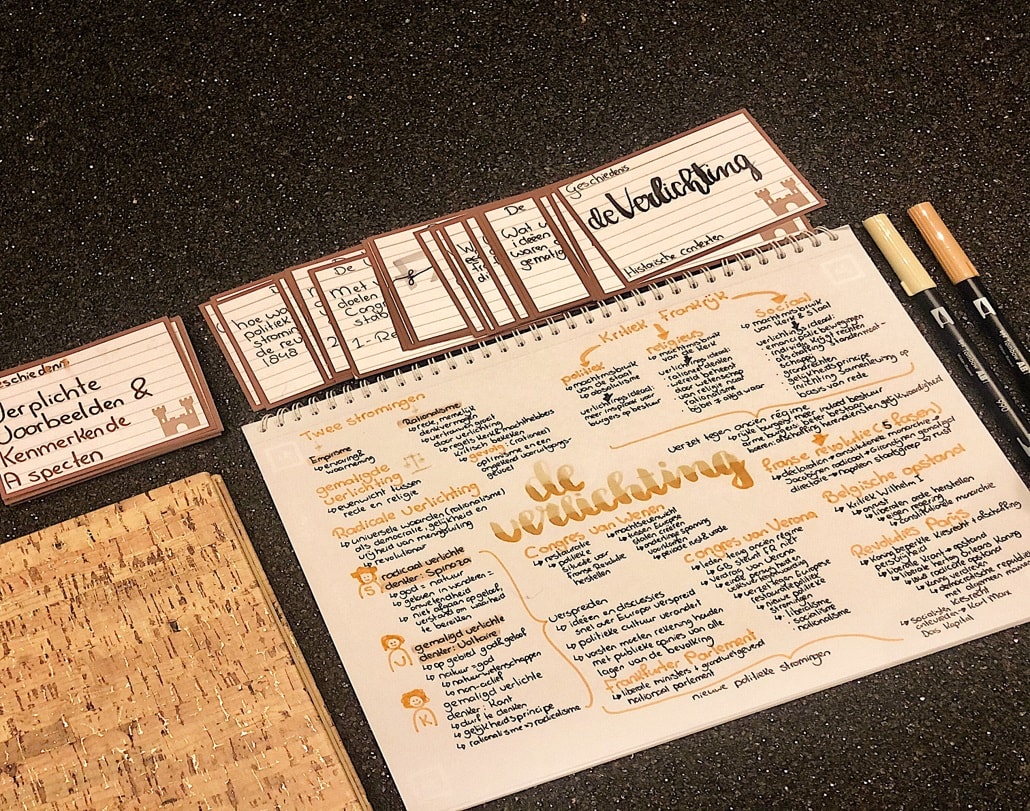The test week, exam week or exams are coming. You have a pile of thick books, some summaries and loose notes here and there. Where are you going to start? In this article we will try to explain step by step how to break up this huge pile of learning material and turn it into a handy pile of learning cards.
Step 1: Read globally
If you have not yet read the text completely: start with that first. The first time you certainly do not have to understand everything. Just skip pieces that you do not understand yet, the point is that you get a global overview of the subject matter.
If you have to pause every time to look up something or don’t understand something, it can be demotivating. So just read on and get a rough idea of what you need to learn.
If you have done this completely, take a break and let everything sink in. Flashcards Social Work with book – white – fan mail
Step 2: Read and mark carefully
Have you read all the material globally? Beautiful! You have already completed the first step. Now you start again from the beginning and carefully read the text. Mark key phrases, important definitions with tabs or a pencil (if you still want to hand in your books). Otherwise you dive right in with markers or colored pens.
If you don’t know a concept: look it up. If you can’t get through it at all, ask your classmates, teacher or someone else who can help you further. Remember that you are not learning yet, so you don’t have to remember everything. The point is to filter out the most important material and see what you need to pay attention to.read and underline text
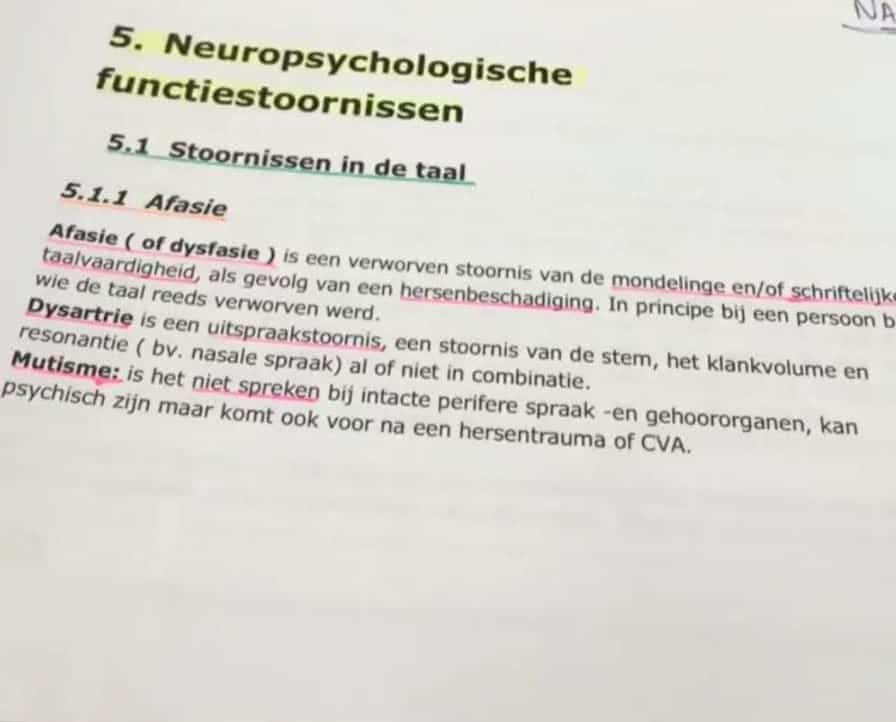
Step 3: Summarize
Have you found the most important core sentences, definitions and concepts from the text? Then you can start summarizing. The advantage: you have already seen the text twice, so it is now a lot easier to separate main and side issues.
Use enough space for your summary, it does not all have to fit on 2 A4 pages. You will transfer this to flashcards later. So use a lot of white space for your overview. Summarizing is not everyone’s biggest hobby. That’s why you can start now to make it a bit more fun. Use your own colors for titles and definitions for each subject, chapter or subject. You can link these to your flashcards again later.
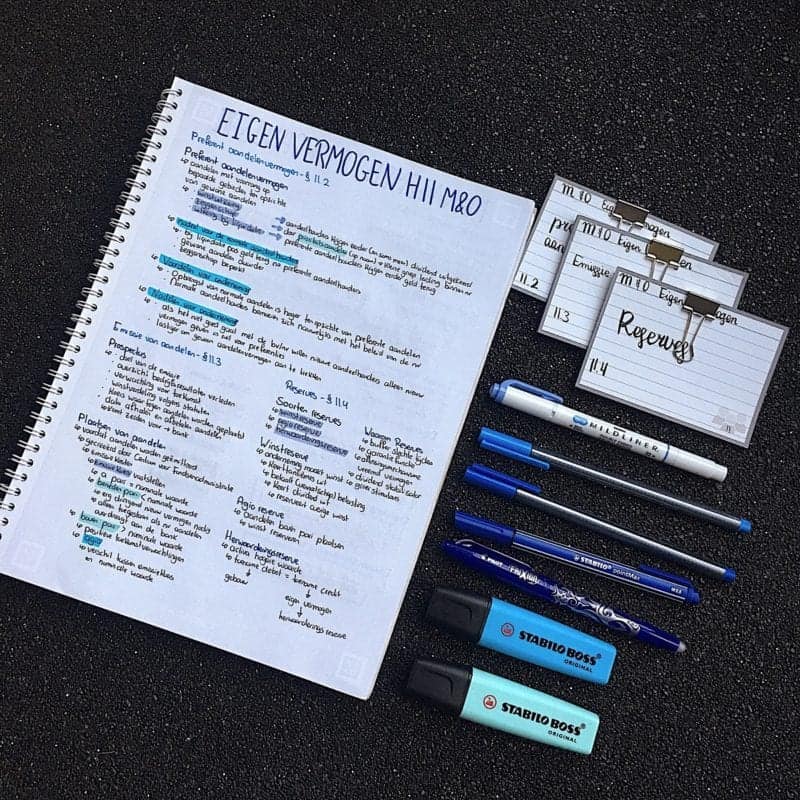
Summary with flashcards Photo: @Ninationalnerd (Insta)
Step 4: Write flashcards
Now the fun is really starting. You’ve read the material, summarized it, and you probably already know more than half of it. But there are always difficult concepts, definitions and core items that you just can’t seem to remember.
Flashcards were made for this. Instead of learning your summary a thousand times (half of which is unnecessary), you make flashcards for the most difficult concepts.
Write the term, definition or question on the front of the flashcard, the answer on the other side. Use different colored cards and markers to separate the subjects.
The biggest advantage: you are already learning the material again because you write yourself.We have a whole page of tips for making the best flashcards. But our shortlist is this:
- Keep it short
- Use colors
- Use diagrams or drawings where possible
- Read all the tips for making the best flashcards here
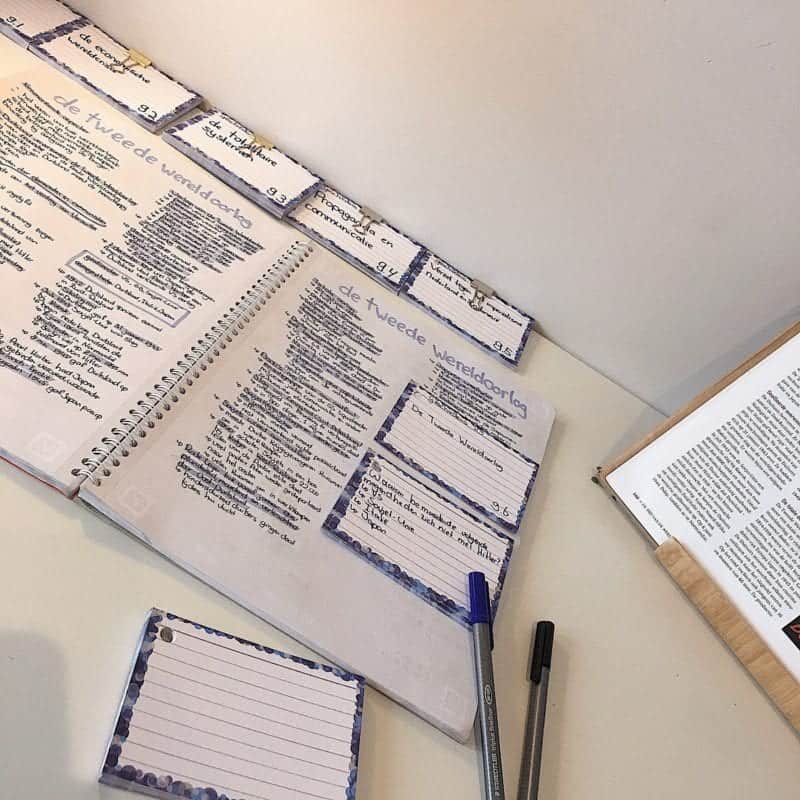
Step 5: Learn the flashcards
You can now start learning the flashcards. You start by learning all the cards every day. Take them one by one and answer the question or definition that is on them.
Do you know one? Beautiful! Then the card immediately goes to the second stack. You will learn this every two or three days. Do you know one of the second stack? Even better! Then he goes to the third stack. You will learn this every five days. Don’t know one? Then it goes back to the first pile you learn every day.
Use the boxes of the Leitner system for this, or make your own stacks. Learning with flashcards according to the Leitner system
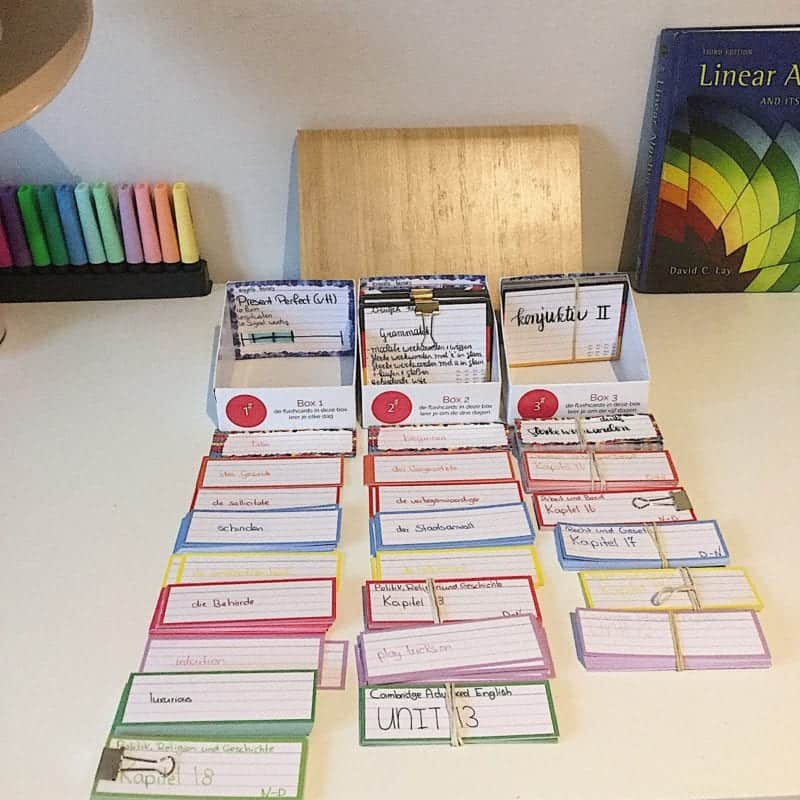
Some extra pieces of advise to make learning more fun (and more effective)
- Make a plan
You’ve probably learned how to make a schedule, but don’t fill it up to the minute. Make sure you keep room for other tasks (or no tasks!) If you no longer have the energy for something - Provide variety
Do not read all the books in one day or make all the flashcards at once. Divide your subjects and your subjects alternate. For one subject, read the summary for the other subject - Reward yourself instead of punishing
Focus on what you have done instead of what you have not done. Use your plan per box, cross off what you have achieved and be proud of it.
We hope this article has helped you learn large amounts of subject matter. It’s a lot of work, but don’t be fooled. Because you can go through everything step by step, this approach makes studying a bit easier
